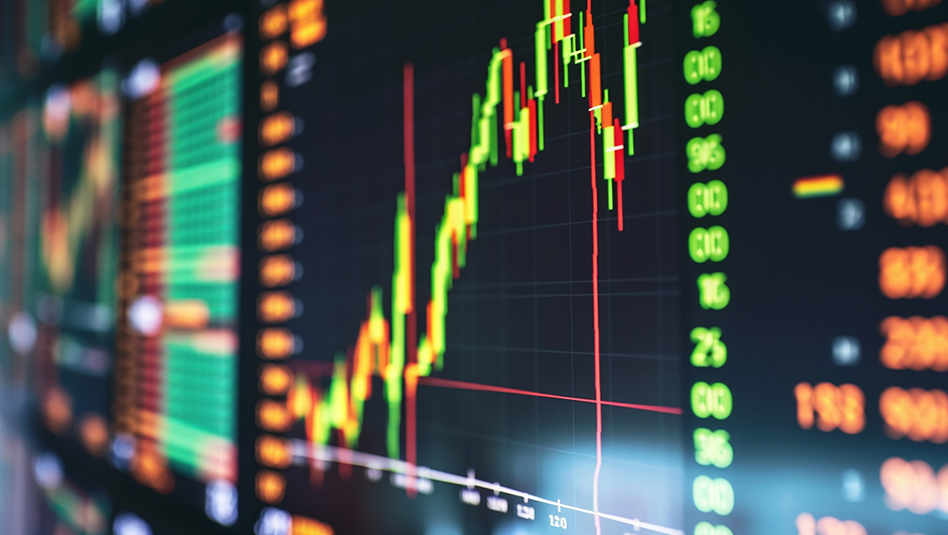Country: China
Read this content. Log in or sign up.
If you are an investor with us, log in first to your Metrobank Wealth Manager account.
If you are not yet a client, we can help you by clicking the SIGN UP button.

Fundamental View
AS OF 11 Jun 2025We maintain our Market perform on JD post its decent 1Q25 results; topline growth accelerated, EBITDA margin expanded and gross debt metrics improved, but free operating cash flow turned more negative on increased working capital investments which led to a contraction in net cash. We expect JD’s debt metrics to marginally improve over the next 12 months, with topline growth supported by the domestic stimulus policies, lower EBITDA margin on wider losses for its food delivery expansion, healthy FOCF which should cover its shareholder rewards, flat net cash to YE24, and steady gross leverage. We think its $ bonds trades fair compared to its Asia A/A- corporate and China tech peers, and has likely priced in its stable credit outlook and potential rating upgrade by S&P.
Business Description
AS OF 11 Jun 2025- JD is one of China's leading e-commerce and retail infrastructure service providers.
- JD has a large fulfillment infrastructure which includes over 1,600 warehouses operated by the company, and 2,000 cloud warehouses operated by third-party warehouse owner-operators under JD Logistics Open Warehouse Platform. Its warehouse network had an aggregate gross floor area of approximately over 32 mn square meters, as of 31 December 2024.
- JD has 3 operating segments, namely (1) JD Retail (83% of 1Q25 revenues), which includes JD Health and JD Industrials, and the segment mainly engages in online retail, online marketplace and marketing services in China; (2) JD Logistics (15%) which includes both internal and external logistic businesses; and (3) New businesses (2%) which consist of Dada, JD Property, Jingxi and overseas businesses.
- JD had a market capitalization of RMB 353.0 bn as of 10 June 2025.
Risk & Catalysts
AS OF 11 Jun 2025While Chinese regulators have adopted a friendlier stance towards tech companies, any regulatory clampdowns may still adversely affect the business of JD (e.g. antitrust rules, data security & personal data protection laws).
Intensifying competition amongst Chinese eCommerce platforms with the entrance of new live-streaming/short-form video platforms and group buying discount platforms may result in slower topline growth and weaker EBITDA margin for JD as its increase its user/merchant incentives and promotional activities to defend its market share.
There are regulatory risks involving the use of variable interest entities (VIEs) to circumvent China’s restrictions on foreign ownership of Internet Content Providers (ICPs). Specifically, VIE transactions involving “change in control” will be subject to antitrust regulatory processes.
Key Metric
AS OF 11 Jun 2025| RMB mn | FY21 | FY22 | FY23 | FY24 | LTM 1Q25 |
|---|---|---|---|---|---|
| Debt to Book Cap | 12.2% | 19.2% | 18.8% | 22.3% | 22.1% |
| Debt/Total Equity | 13.8% | 23.7% | 23.1% | 28.7% | 28.3% |
| Debt/Total Assets | 6.9% | 10.9% | 10.9% | 12.9% | 12.9% |
| Gross Leverage | 1.8x | 1.9x | 1.5x | 1.7x | 1.6x |
| Interest Coverage | 16.1x | 16.3x | 15.5x | 18.5x | 19.5x |
| EBITDA Margin | 2.0% | 3.3% | 4.1% | 4.6% | 4.7% |
CreditSight View Comment
AS OF 14 May 2025We maintain our Market perform on JD post its decent 1Q25 results; topline growth accelerated, EBITDA margin expanded and gross debt metrics improved, but free operating cash flow turned more negative on increased working capital investments which led to a contraction in net cash. We expect JD’s debt metrics to marginally improve over the next 12 months, with topline growth supported by the domestic stimulus policies, lower EBITDA margin on wider losses for its food delivery expansion, healthy FOCF which should cover its shareholder rewards, flat net cash to YE24, and steady gross leverage. We think its $ bonds trades fair compared to its Asia A/A- corporate and China tech peers, and has likely priced in its stable credit outlook and potential rating upgrade by S&P.
Recommendation Reviewed: May 14, 2025
Recommendation Changed: November 21, 2022
Who We Recommend
Korea Gas Corp.

Macquarie Bank

Siam Commercial Bank



How may we help you?
Search topics about wealth insights and investments.Read this content. Log in or sign up.
If you are an investor with us, log in first to your Metrobank Wealth Manager account.
If you are not yet a client, we can help you by clicking the SIGN UP button.

Fundamental View
AS OF 10 Jun 2025We maintain our Outperform recommendation on Tencent post its decent 1Q25 results; topline accelerated, EBITDA margin expanded, free operating cash flow remained robust, and debt metrics remained modest. We expect Tencent’s topline growth to marginally accelerate in FY25, supported by its advertising, domestic/international gaming, fintech and cloud segments; we expect EBITDA margin to marginally improve as its better revenue mix offset the increased R&D spending for AI development; we expect FOCF to expand, and debt metrics to improve from 1Q25. We continue viewing Tencent as a core holding in China and Asia IG credits. We prefer its 2029/2041 notes for spread pick up against Chinese SOEs. We think Tencent is more attractive compared to BIDU/JD and more defensive that BBB China tech.
Business Description
AS OF 10 Jun 2025- Founded in November 1998, Tencent is a leading provider of Internet value added services in China. Since its establishment, Tencent has ventured into instant messaging, social networking, online payments, digital entertainment, and PC and smartphone gaming. Most recently, it has also forayed into high-tech areas such as artificial intelligence, and cloud computing.
- Tencent's leading Internet platforms in China include Weixin/WeChat (online messaging), QQ Instant Messenger (online messaging), Tencent Games (gaming), Tencent Video/Weixin Video Accounts (video platforms), WeChat Pay (payments), and Tencent Cloud. The combined monthly average users (MAU) of Weixin and Wechat reached 1.40 bn as of 31 March 2025.
- In 4Q24, 46% of revenues came from Value Added Services (which consist of Domestic Games, International Games, and Social Networks), 33% came from FinTech and Business Services (e.g. commercial payments and cloud), 19% from Online Advertising and 2% from Others.
- Tencent is currently primarily listed on the Hong Kong Stock Exchange, with a market capitalization of HKD 4.7 tn as of 10 June 2025.
Risk & Catalysts
AS OF 10 Jun 2025While Chinese regulators have adopted a more friendly stance towards tech companies, any regulatory clampdowns abroad and domestically (e.g. antitrust rules, data security, personal information protection laws) may affect Tencent’s business. Tencent’s gaming, music streaming, and online payment units are among those that have come under regulatory scrutiny in the past.
Tencent uses variable interest entities (VIEs) to circumvent China’s restrictions on foreign ownership of Internet Content Providers, which poses regulatory risks. Specifically, VIE transactions involving “change in control” will be subject to antitrust regulatory processes.
US-China tension may escalate under the new Trump Administration, including additional chip sanctions, which may result in higher volatility. Failing to secure a stable supply of advanced AI chips and/(or) find domestic alternatives could weigh on the long-term AI development of Tencent against international peers.
Key Metric
AS OF 10 Jun 2025| RMB bn | FY21 | FY22 | FY23 | FY24 | LTM 1Q25 |
|---|---|---|---|---|---|
| Debt to Book Cap | 27.0% | 31.4% | 29.8% | 25.4% | 26.5% |
| Net Debt to Book Cap | 6.0% | 8.5% | 1.0% | 2.3% | 4.4% |
| Debt/Total Equity | 36.9% | 45.9% | 42.5% | 34.0% | 36.0% |
| Debt/Total Assets | 20.1% | 22.8% | 23.5% | 20.1% | 21.1% |
| Gross Leverage | 1.7x | 1.9x | 1.6x | 1.3x | 1.4x |
| Net Leverage | 0.4x | 0.5x | 0.1x | 0.1x | 0.2x |
| Interest Coverage | 24.7x | 19.0x | 19.9x | 22.5x | 23.0x |
| EBITDA Margin | 34.9% | 34.3% | 38.9% | 42.4% | 43.2% |
CreditSight View Comment
AS OF 15 May 2025We maintain our Outperform recommendation on Tencent post its decent 1Q25 results; topline accelerated, EBITDA margin expanded, free operating cash flow remained robust, and debt metrics remained modest. We expect Tencent’s topline growth to marginally accelerate in FY25, supported by its advertising, domestic/international gaming, fintech and cloud segments; we expect EBITDA margin to marginally improve as its better revenue mix offset the increased R&D spending for AI development; we expect FOCF to expand, and debt metrics to improve from 1Q25. We continue viewing Tencent as a core holding in China and Asia IG credits. We prefer its 2030/2031/2041 notes for spread pick up against Chinese SOEs. We think Tencent is more attractive compared to BIDU/JD and more defensive that BBB China tech.
Recommendation Reviewed: May 15, 2025
Recommendation Changed: August 18, 2022
Who We Recommend
Korea Gas Corp.

Macquarie Bank

Siam Commercial Bank



How may we help you?
Search topics about wealth insights and investments.Read this content. Log in or sign up.
If you are an investor with us, log in first to your Metrobank Wealth Manager account.
If you are not yet a client, we can help you by clicking the SIGN UP button.

Fundamental View
AS OF 10 Jun 2025We maintain our M/P on Baidu post its uninspiring 1Q25 results; topline growth was ahead of expectation on strong AI cloud demand, but EBITDA margin fell on a weaker revenue mix, FOCF turned negative on higher AI investments, debt metrics weakened, and net cash contracted. We expect a modest deterioration in Baidu’s debt metrics compared to YE24. We continue preferring Alibaba and Tencent over Baidu among A-rated China tech credits. We like the stronger balance sheet, larger scale, stronger business positions, and better credit outlook of Alibaba and Tencent. Baidu trades only 3-8 bp wider than Alibaba and Tencent which we view as rich given the limited improvement in its debt metrics over the next 12 months. For investors looking for exposure in Baidu, we prefer its Apr-2030.
Business Description
AS OF 10 Jun 2025- Founded in 2000, Baidu started out as a search engine business and began its development into artificial intelligent (AI) since 2010.
- Baidu Core is the main revenue driver of the company (78% of 1q25 revenues) which provides search-based, feed-based and other online marketing services (total: 53% of 3Q24 revenues), as well as products and services from new AI initiatives (29% of revenues); Baidu's AI initiatives include AI cloud (enterprise & public sector cloud, and personal cloud), Intelligent Group Driving (Apollo Go, Apollo auto solutions, and intelligent EVs under Jidu Auto), Mobile Ecosystem (Baidu App, ERNIE Bot, Haokan and Baidu Post), and other growth initiatives (ie. Xiaodu smart devices powered by DuerOS smart assistant and AI chips).
- iQiyi accounts for the remaining revenues of Baidu; iQIYI is an online video platform with a content library that includes licensed movies, television series, cartoons, and other programs.
- Baidu launched ERNIE bot in Mar-23, a generative AI chatbot powered by ERNIE, Baidu's in-house foundation model.
- Baidu has a market capitalization of RMB 223.4 bn as of 10 June 2025.
Risk & Catalysts
AS OF 10 Jun 2025Any regulatory clampdowns abroad and domestically (e.g. potential US investment ban, antitrust rules, data security and personal information protection laws) may adversely affect the business of Baidu. The interpretation of Chinese laws and regulations involves some degree of uncertainty.
There are regulatory risks given the corporate structure which uses variable interest entities (VIEs) to circumvent China’s restrictions on foreign ownership of Internet Content Providers (ICPs).
Baidu has made significant investments into long-term AI-related projects, which may take time to turn profitable. A potential escalation of the US chip restriction could have a material negative impact its AI related business (ie. cloud, ernie bot, autonomous driving).
Key Metric
AS OF 10 Jun 2025| RMB bn | FY21 | FY22 | FY23 | FY24 | LTM 1Q25 |
|---|---|---|---|---|---|
| Debt to Book Cap | 29.7% | 28.5% | 25.0% | 22.5% | 26.7% |
| Debt/Total Equity | 42.2% | 39.8% | 33.4% | 29.0% | 36.4% |
| Debt/Total Assets | 24.1% | 23.4% | 20.8% | 18.5% | 22.5% |
| Gross Leverage | 3.3x | 2.8x | 2.2x | 2.0x | 2.6x |
| Interest Coverage | 8.2x | 11.4x | 12.1x | 13.8x | 13.5x |
| EBITDA Margin | 22.6% | 26.8% | 29.2% | 29.3% | 28.9% |
CreditSight View Comment
AS OF 22 May 2025We maintain our M/P on Baidu post its uninspiring 1Q25 results; topline growth was ahead of expectation on strong AI cloud demand, but EBITDA margin fell on a weaker revenue mix, FOCF turned negative on higher AI investments, debt metrics weakened, and net cash contracted. We expect a modest deterioration in Baidu’s debt metrics compared to YE24. We continue preferring Alibaba and Tencent over Baidu among A-rated China tech credits. We like the stronger balance sheet, larger scale, stronger business positions, and better credit outlook of Alibaba and Tencent. Baidu trades only 3-8 bp wider than Alibaba and Tencent which we view as rich given the limited improvement in its debt metrics over the next 12 months. For investors looking for exposure in Baidu, we prefer its Apr-2030.
Recommendation Reviewed: May 22, 2025
Recommendation Changed: August 31, 2022
Who We Recommend
Korea Gas Corp.

Macquarie Bank

Siam Commercial Bank



How may we help you?
Search topics about wealth insights and investments.Read this content. Log in or sign up.
If you are an investor with us, log in first to your Metrobank Wealth Manager account.
If you are not yet a client, we can help you by clicking the SIGN UP button.

Fundamental View
AS OF 10 Jun 2025We maintain our Outperform recommendation on Alibaba post its decent 1Q25 results; topline growth marginally slowed, EBITDA margin improved,FOCF fell on higher capex, net cash remained robust and debt metrics were stable. We expect Alibaba’s topline growth to accelerate over FY26, driven by better domestic eCommerce monetization, resilient international eCommerce, and robust cloud demand; we expect EBITDA margin to remain flat at 20%, but FOCF to trend lower on a material increase in capex for cloud; that said, we expect Alibaba’s Total debt/EBITDA to improve over the next 12 months, and maintain its healthy net cash position. We continue to view Alibaba as a core holding in Asia IG credits. We prefer its 30/35/41 bonds for spread pick up against Chinese SOEs.
Business Description
AS OF 10 Jun 2025- Founded in 1999, Alibaba is the largest retail commerce company in the world based on gross merchandise volume (GMV) as of 31 March 2023.
- The company's business segments comprise Taobao & Tmall Group (39% of F4Q25 revenue; China e-commerce incl. Taobao, Tmall, Taobao Deals, Taocaicai, 1688.com), International Digital Commerce (13%; incl. Lazada, AliExpress, Trendyol and Daraz), Cloud Intelligence Group (11%; incl. AliCloud, AI), logistic provider Cainiao (8%), Local Consumer Services (6%; incl. Ele.me, Amap), and Digital Media and Entertainment (2%, incl. Youku & Alibaba Pictures) and Others (21%; incl. Freshippo, Fliggy, Alibaba Health, Intelligent Information Platform, SunArt, DingTalk).
- Taobao/Tmall is Alibaba's core business and the main EBITA & cash generation unit of the group. Alibaba's annual active consumer exceeded 1 bn in June-2022.
- Alibaba had a market capitalization of RMB 2.3 tn as of 10 June 2025.
Risk & Catalysts
AS OF 10 Jun 2025While Chinese policymakers have adopted an increasingly friendly stance towards tech platforms, regulatory clampdown (e.g. anti-monopoly guidelines, data security laws, personal information protection laws) may still affect Alibaba as it increases compliance cost. There are regulatory risks given the corporate structure which uses variable interest entities (VIEs) to circumvent China’s restrictions on foreign ownership of Internet Content Providers (ICPs).
Intensifying competition amongst eCommerce platforms may result in slower topline growth and weaker EBITDA margins.
Alibaba does not control Alipay but relies on Alipay to conduct substantially all the payment processing and escrow services on its marketplaces.
US-China tension may escalate under the new Trump Administration, including additional chip sanctions, which may result in higher volatility. Failing to secure a stable supply of advanced AI chips and/(or) find domestic alternatives could weigh on the long-term AI development of Tencent against international peers.
Key Metric
AS OF 10 Jun 2025| CNY BN | FY21 | FY22 | FY23 | FY24 | FY25 |
|---|---|---|---|---|---|
| Debt to Book Cap | 12.1% | 11.6% | 12.6% | 13.3% | 17.5% |
| Debt/Total Equity | 13.8% | 13.1% | 14.4% | 15.3% | 21.2% |
| Debt/Total Assets | 8.8% | 8.3% | 9.2% | 9.7% | 12.8% |
| Gross Leverage | 0.8x | 0.9x | 0.9x | 0.9x | 1.2x |
| Interest Coverage | 39.9x | 32.2x | 29.6x | 24.0x | 20.7x |
| EBITDA Margin | 24.9% | 18.5% | 20.2% | 20.3% | 19.9% |
CreditSight View Comment
AS OF 16 May 2025We maintain our Outperform recommendation on Alibaba post its decent 1Q25 results; topline growth marginally slowed, EBITDA margin improved,FOCF fell on higher capex, net cash remained robust and debt metrics were stable. We expect Alibaba’s topline growth to accelerate over FY26, driven by better domestic eCommerce monetization, resilient international eCommerce, and robust cloud demand; we expect EBITDA margin to remain flat at 20%, but FOCF to trend lower on a material increase in capex for cloud; that said, we expect Alibaba’s Total debt/EBITDA to improve over the next 12 months, and maintain its healthy net cash position. We continue to view Alibaba as a core holding in Asia IG credits. We prefer its 30/31/35/41 bonds for spread pick up against Chinese SOEs.
Recommendation Reviewed: May 16, 2025
Recommendation Changed: August 05, 2022
Who We Recommend
Korea Gas Corp.

Macquarie Bank

Siam Commercial Bank










 DOWNLOAD
DOWNLOAD



